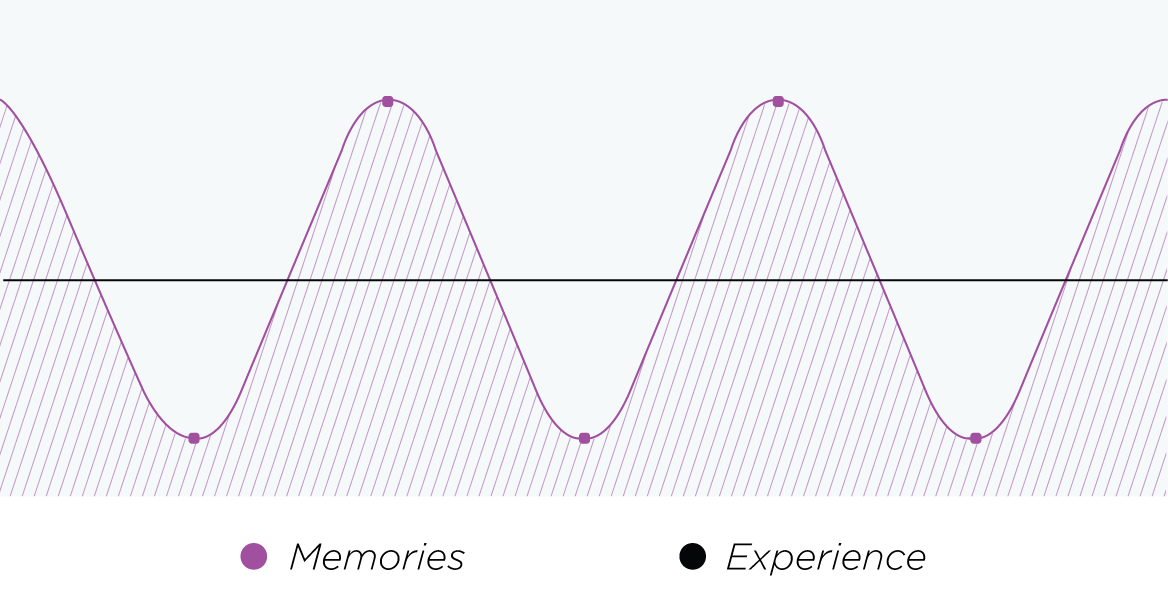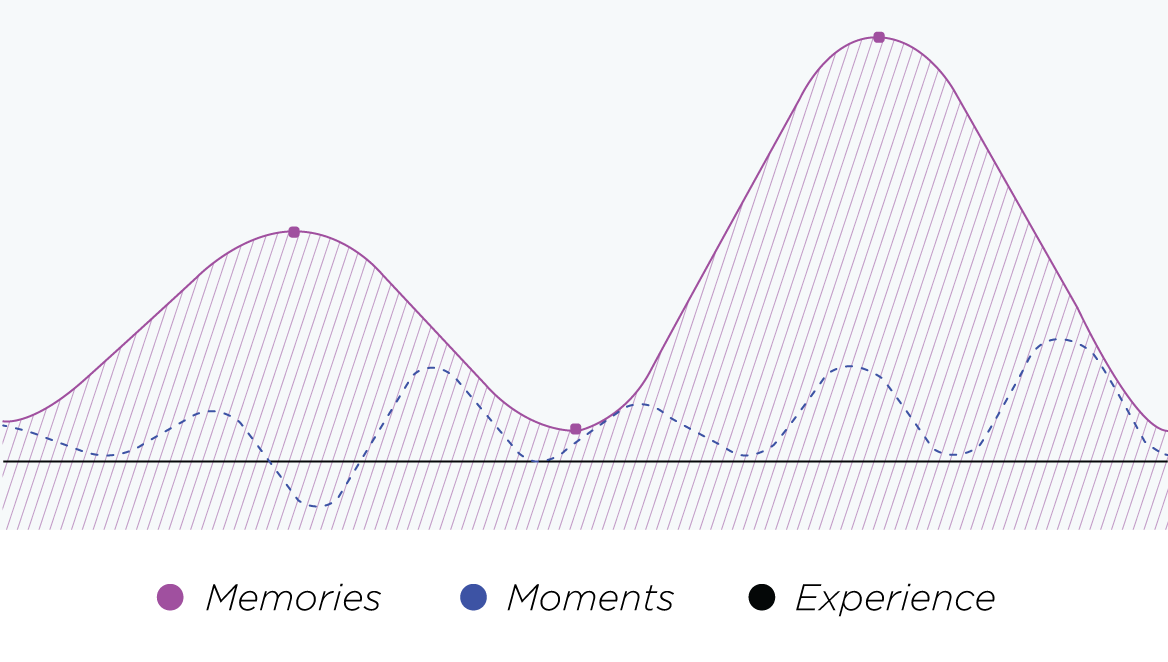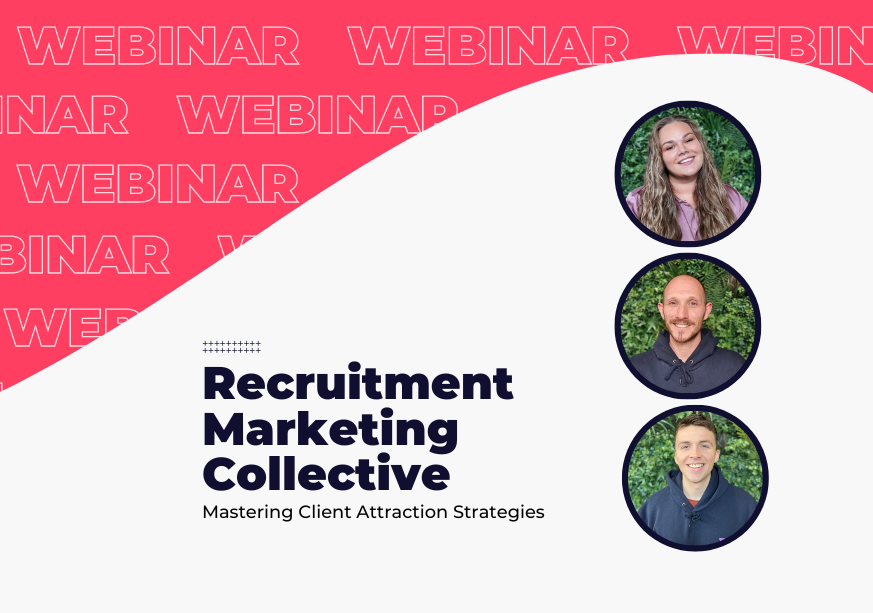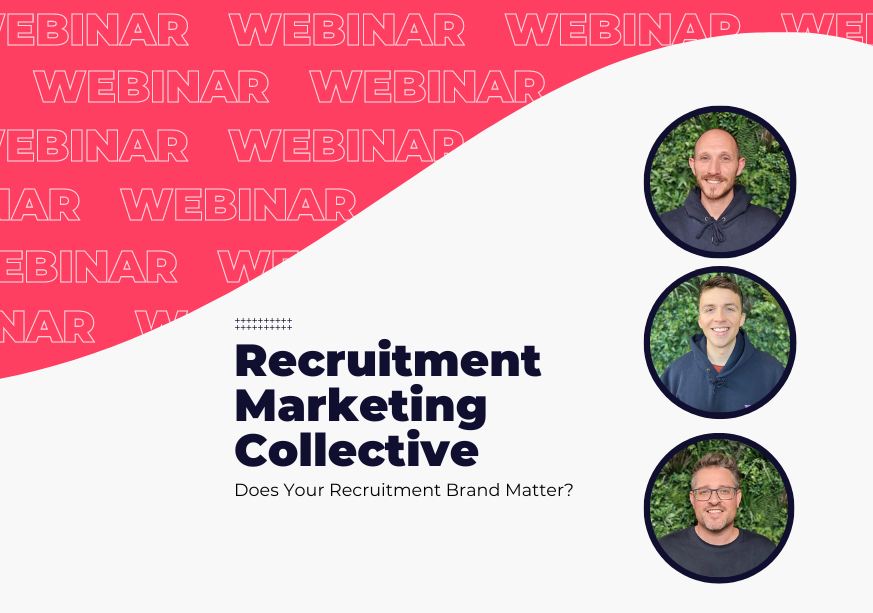Have you ever tried to describe an advert to someone but can’t remember what the ad was about or who made it? This happened to me not long ago when I was asked what my favourite YouTube ad was.
Is that because I only saw it once and it never had a chance to engrain itself in my brain, or is it because it just really wasn’t that memorable?
This resonated with me again in an article I read by Curt Arledge on Smashing Magazine, which goes into detail on why we should be designing websites for memory, as well as experience.
The ad I mentioned before was created for experience but not memory.
What’s the difference between experience and memories?
Experience is a constant which is essentially real-time. Experience is the thought process of what is happening in the immediate present. However, we don’t remember all this conscious experience, instead, our brain ties all the bigger-than-basic bits into memories.
Our memories of events are formed during an average of the most intense moments (which could be a peak or a trough) of the experience and then the final moment. The below image demonstrates what I’m getting at.

A memory could be positive and be measured as a peak, or it could be negative/painful, and that memory that would be represented as a trough.
This theory was founded by Nobel Prize-winning psychologist Daniel Kahneman, via his Peak-End Rule theory. So, a lot of pleasure could be remembered as pain, if the most intense experience of that memory wasn’t all that pleasurable and the outcome was ultimately negative.
So how does this translate into marketing?
It may seem obvious, but any consumer that encounters your brand needs to have a good experience to take away positive memories. To keep things positive, it is important to provide a clear consistent brand message, across all your customer touch-points and marketing efforts from landing pages, to blogs and social media activities.
The marketing of a brand isn’t always down to one body. Sure, there are some companies that keep it all entirely in-house, but from my experience, at some point, an agency gets involved.
It isn’t just about marketing
The user experience of a site is crucial to customer memories if a user has a bad experience on your website – they are guaranteed to remember it. We should always be looking to make changes that help users navigate the site more effectively. The client can sometimes control this, but I feel that whenever an agency is involved with the marketing of a brand, whether they have the power to control onsite changes or not, they should be looking to positively enforce UX change.
Why?
Well because, if there is any form of paid media or budget assigned to drive customers to site organically, then a poor user experience is going to increase bounce rates, which will drive up paid budget by negatively impacting on Quality Score or promote pogo sticking within organic results.
Recommending the use of UX measuring tools such as Hotjar, WhatUsersDo and even phone call tracking should be on the agencies to-do-list.
- Hotjar will provide heat map analysis and funnel visualisation.
- WhatUsersDo will allow an agency to get in the minds of customers and find out how they use the website.
- Phone call tracking software (such as Ruler Analytics) can provide invaluable insights into just how customers are being handled when coming into communication with the client.
While tools can help, there needs to be a seamlessly integrated partnership between the agency and client for the user to enjoy a positively memorable customer experience. This experience should also lead to something.
Having a clear funnel
After all, what is the point in marketing if it doesn’t send the user down a clear funnel to a clear goal?
Managing this experience shouldn’t just fall into the lap of an agency. There are other factors to consider such as; efficient delivery, external communications with customers and product quality.
If any of these stages break down, then one poor experience could dampen the satisfaction of the end goal (i.e. the user receiving/using the client’s product/service) and potentially create a negative overall memory of the brand.
This is essentially about creating customer satisfaction and ultimately, increasing their happiness.
What if things go wrong?
If all the cogs are turning efficiently then the customer has more chance of creating positive memories from a purchase. But it’s when things aren’t going as planned that communication between client, agency and most importantly the customer, is key to preventing a peak negative moment.
For example, maybe a product has gone out of stock and it won’t be back in the warehouse for two weeks. If the client speaks to the agency (I know this is a far more simplified view than what really happens), customers can be notified on-site via a banner or offered an alternative product, preventing a poor experience by avoiding an unexpected delay in delivery.
Communication is key. If the shipping of the product is going to be delayed after the customer has purchased on site, then let them know via email. Offer an alternative or even a refund, do everything possible to prevent that negative experience.
“an experience with an emotional high point, is more resilient to problems. In theory, one single great high point can override an otherwise disastrous experience”. - Curt Arledge
Being Proactive
How can we prevent these instances and what would an ideal model look like for a typical e-commerce brand?
Firstly, I’m not going to use an agency/client model because there is one company who I feel satisfy the ‘customer experience’ model better than anyone else. The company is also big enough for us to imagine that they have many agencies working with them, as well as 1000s of staff, so communication between departments is key to creating a positive brand experience. Who are they?

Brand Introduction
You may find their website through their domination of search results, come across a Fire TV Stick in-store or hear of Amazon Prime though one of their ads.
That is your introduction to the brand and if it’s a positive moment, it will lead you to their website. If it’s a negative, it’s highly likely you either won’t get to their site, or you will bounce upon arrival and the user journey ends there.
This highlights how important it is to introduce a potential customer to your brand through a positive experience.
Browsing & Ordering
Amazon are famed for ensuring their site loads as quickly as possible. An essential part of UX is about getting users around the site as quickly and efficiently as possible, which is something all agencies should be ensuring their clients are focused on.
After you’ve found what you are looking for, the next stage is the ease of ordering what you want. In this case, Amazon work tirelessly on their UX and getting people through the checkout process quickly such as their ‘1-click’ check-out.
Delivery
Amazon Prime has made delivery of their products an incredibly quick and efficient process. You can literally order in the evening and receive your delivery the next working day with no further charge. That’s one of the most positive online moments you can create in e-commerce.
One of the biggest barriers to online shopping is delivery times, a slow delivery means it could have been easier for customers to go to a store, this leads to frustration and an intense negative experience.
Finally, the product arrives and hopefully it lives up to expectations.
I know this is a simple version of actual customer experience. However, for the sake of simplicity and not making things more complicated than they need to be, I would like to demonstrate one more overly simplistic scenario.
Turning Negative into Positive
What happens if there is a trough and it’s the most intense moment of the journey? Would it provide less satisfaction in the product or service received?
The best way of creating a new emotional high and reducing the likelihood of a negative customer memory is to, not make the final reception of the product the end of the brand experience.
How about always aiming to get in contact with the customer, let them air their feedback and try to make amends. This could potentially trigger a new positive moment, rescue the situation (if needed) and bring the customer back to your brand.
With more competition than ever, businesses need to be thinking about creating brand evangelism, ensuring customers come back to brand over and over again, preventing the final experience from ever happening.
So, what would the model look like over a longer period of time?

This graph represents the relationship of a negative moment having a lesser effect on the overall memory of a brand experience. Compared to when the user comes back to the brand, experiences no troughs, has a more intense positive moment than in the last memory, creating an enhanced brand experience.
I know all of the above seems really obvious on paper, but the truth is I see negative brand experiences happening over and over again across the web. These can be easily avoided by simple communication happening at the right moment.







